EPISODE 11: FL Torreya to Highlands NC: 90 years of de facto rewilding (2015)
28 minutes - published April 19, 2015
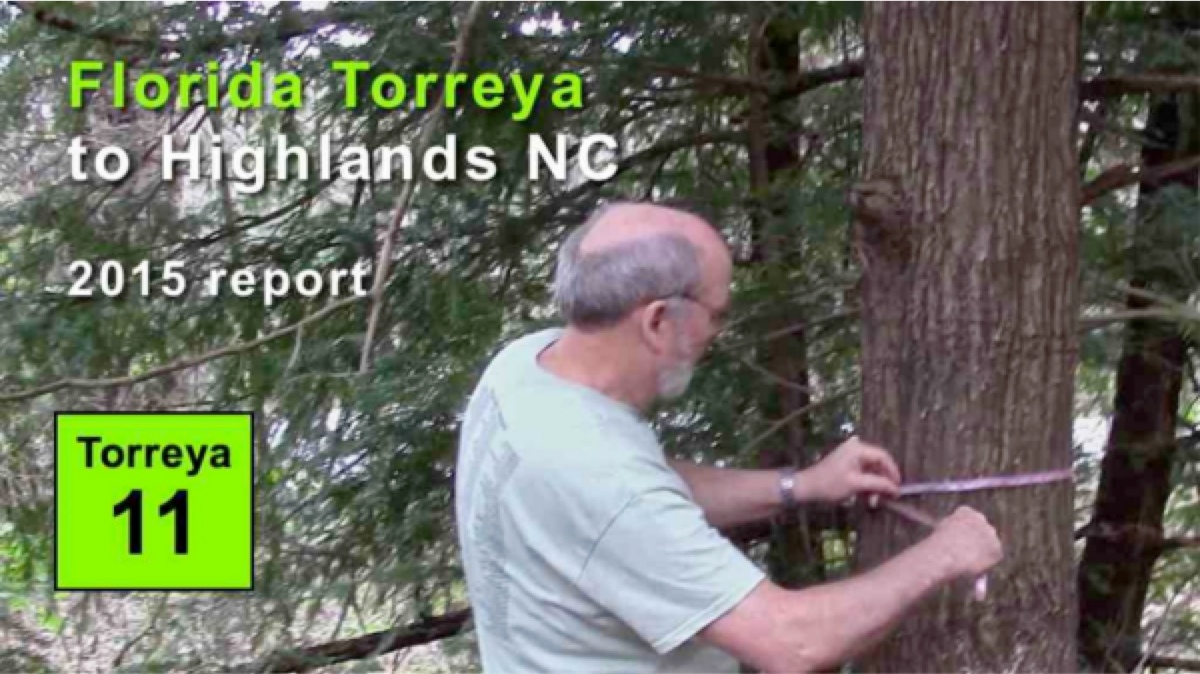 |
|
"Assisted migration" for climate-endangered Florida Torreya inadvertently began 90 years ago, when botanist Thomas Grant Harbison planted this conifer species on his mountainside land in Highlands, NC.
April 2015, Torreya Guardians documented this gone-wild grove — likely, the best and oldest example of how this ancient native lineage grows beneath a deciduous canopy and its slow dispersal by squirrels. Connie Barlow narrates with camera; Jack Johnston explores and measures the Torreya grove and surrounding plants.
|
EPISODE 10a: FL Torreya to North Carolina (pt 1): 2015 report (Waynesville, NC)
54 minutes - published April 9, 2015
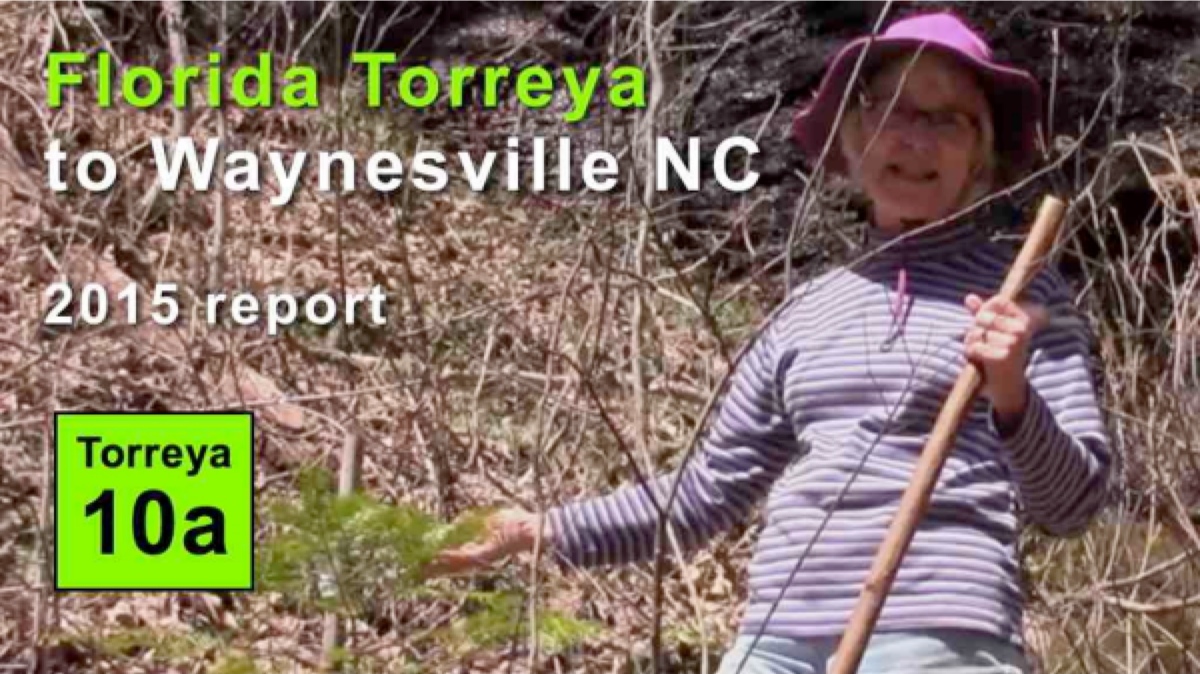 |
|
First video-documentation of fate of Torreya Guardians' 2008 rewilding action of the endangered Torreya taxifolia from Florida to North Carolina.
Connie Barlow films and narrates a survey of the 21 plants in wild forest on the slope of Eaglenest Mountain, near Waynesville.
Results are both positive and negative, which help us ascertain the habitat preferences of this species (moisture, shade, slope, aspect).
|
EPISODE 10b: FL Torreya to North Carolina (pt 2): 2015 report (Junaluska, NC)
45 minutes - published June 7, 2015
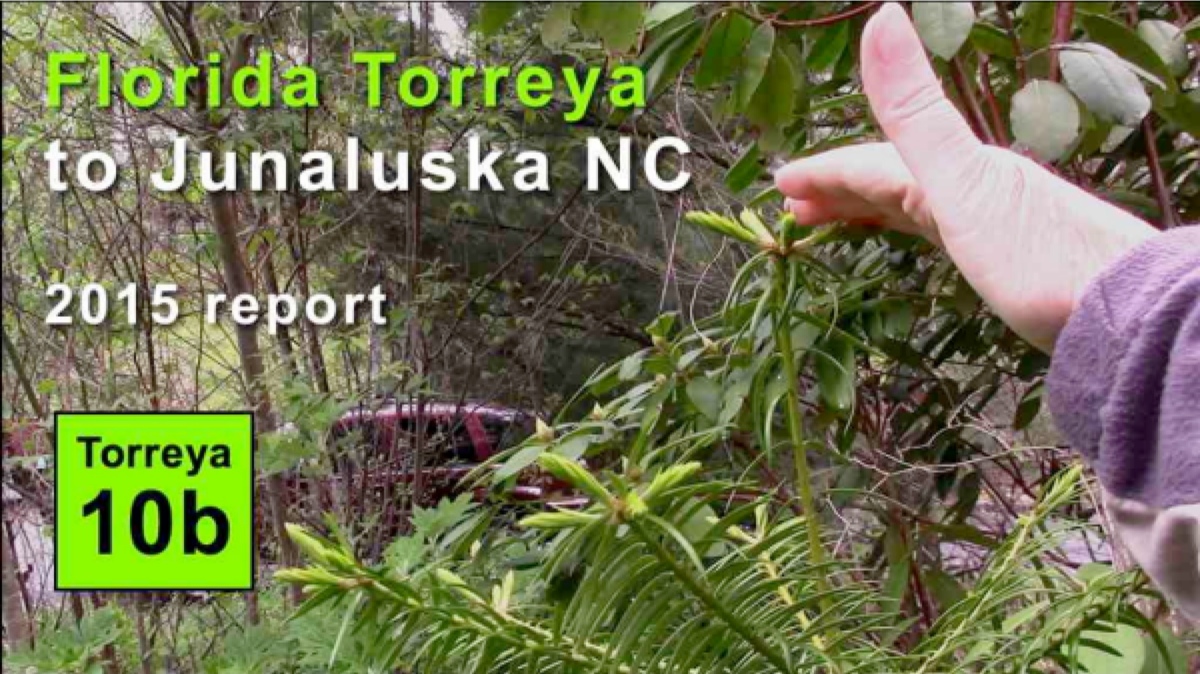 |
|
Key findings: (1) Counting vegetative buds at the tips of branches misleads, as older plants sprout branchlets on older regions of branches, too. (2) Don't plant near rhododendrons. (3) Seedlings too long in the pot (rootbound) are inferior specimens for assessing Torreya's ability to thrive in wild settings, as the main stem may die while growth shifts to a basal sprout. (4) Full sun may be stressful for Torreya outside of watered areas, but because potted seedlings have a full-sun growth form, the plant will need to reorient branching to a horizontal, yewlike form when under a deciduous canopy. |
• UPDATE ON THE JUNALUSKA NC SITE: Scroll up to VIDEO 29 for the October 2018 site visit documentation.
EPISODE 09: FL Torreya to Ocoee Watershed 2: Wolf Creek, NC 2015
13 minutes - published March 29, 2015
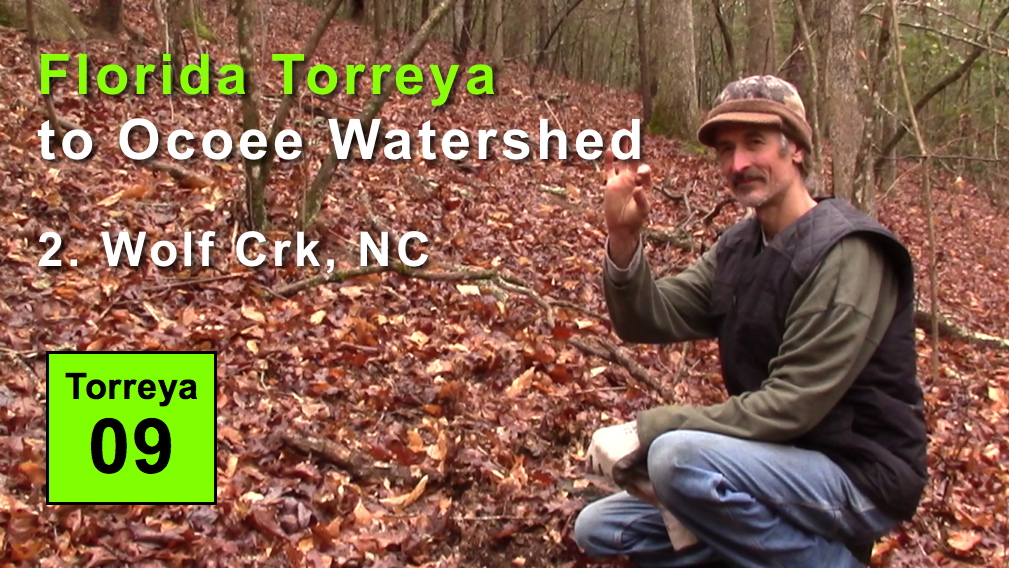 |
|
Thomas Mesko receives 43 seeds from Connie Barlow, drawn from the 2014 harvest of Torreya Guardians. This video documents seeds being planted generally on north-facing slopes, between 1,600 and 1,800 feet elevation on Thomas's 50 acres of forested property.
MARCH 2019 UPDATE: Site visit reveals that this set of shallow-planted seeds suffered 100% seed predation. This was an important learning, as only after the 2015 planting occurred did we ascertain that planting seeds 3 inches deep deterred rodent seed predators.
|
EPISODE 08: FL Torreya to Ocoee Watershed 1: Greasy Creek, TN 2015
19 minutes - published March 27, 2015
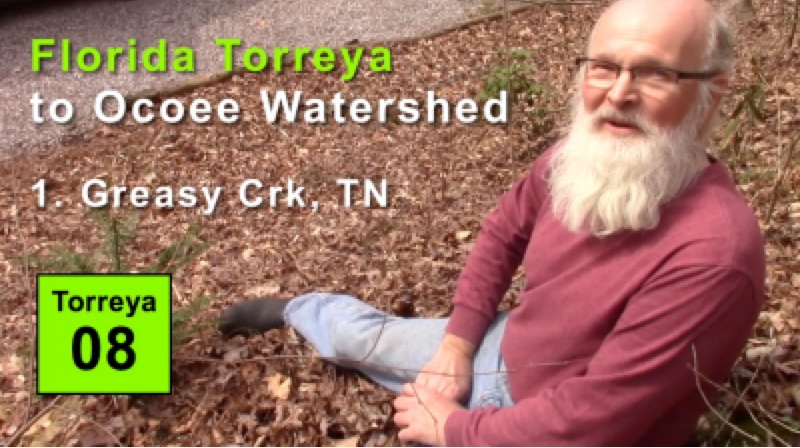 |
|
Clint Bancroft shows Connie Barlow the 9 Florida Torreyas he has planted on his 18 acres in southeastern Tennessee (plus 2 more in pots). At 1,100 ft elevation, and in a mixed deciduous/conifer forest, all the Torreyas look healthy.
Connie gives Clint 40 seeds from the fall 2014 Torreya Guardians' harvest.
Clint demonstrates his rodent-proof outdoor shelter for germinating those seeds.
|
• Scroll up to EPISODE 33 for a March 2019 update on this VERY SUCCESSFUL site.
EPISODE 07: Ancient Florida Torreya in Columbus Georgia
24 minutes - published February 26, 2015
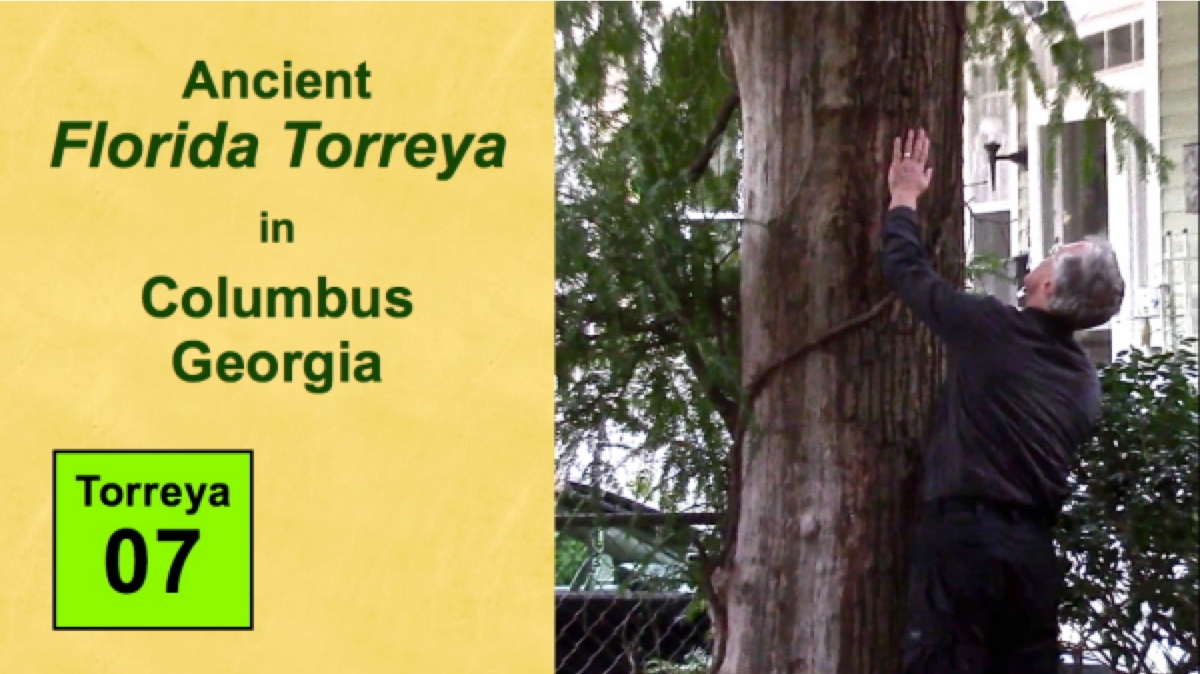 |
|
While visiting the famous sole remaining Torreya taxifolia in Columbus, Georgia, Connie Barlow was struck by its location along a free-flowing section of the Chattahoochee River — which is the main conduit between the peak-glacial plant refuge in Florida and the Appalachians.
A NEW HYPOTHESIS arises: Might Torreya seeds have floated the river downstream to quickly migrate south — but had only squirrels for help in moving back north? |
06: Scouting Sites for Seed Planting at Shoal Sanctuary FL: Grotto Ravine
28 minutes - published February 21, 2015
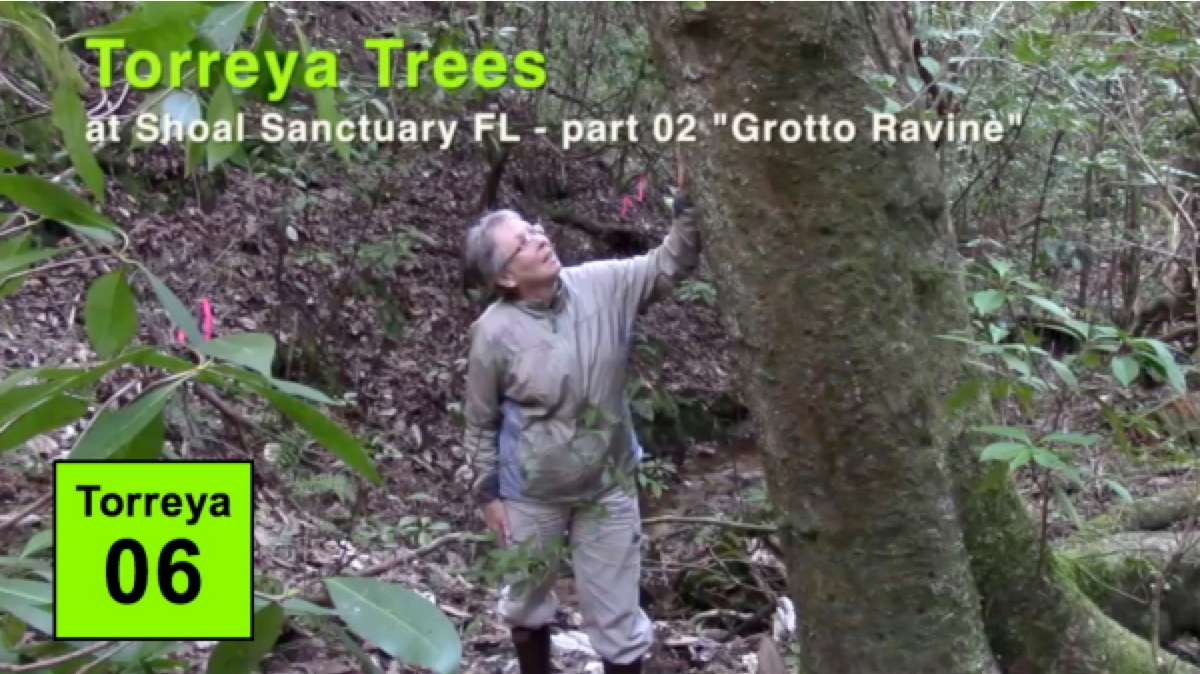 |
|
Connie Barlow identifies sites for 18 seeds to be planted in the moist, cool habitat of Grotto Ravine, within Shoal Sanctuary, Florida.
Connie walks with camera through the ravine, speaking about why this spring-fed sandstone ravine in the Florida panhandle might be the best place for Florida Torreya to make a last stand in its home state.
Clips of this video appear in the video documentation 4 years later (VIDEO 31, filmed onsite January 2019).
|
EPISODE 05: Torreya at Shoal Sanctuary FL: Water and Lime Required in Sandy Uplands
10 minutes - published February 17, 2015
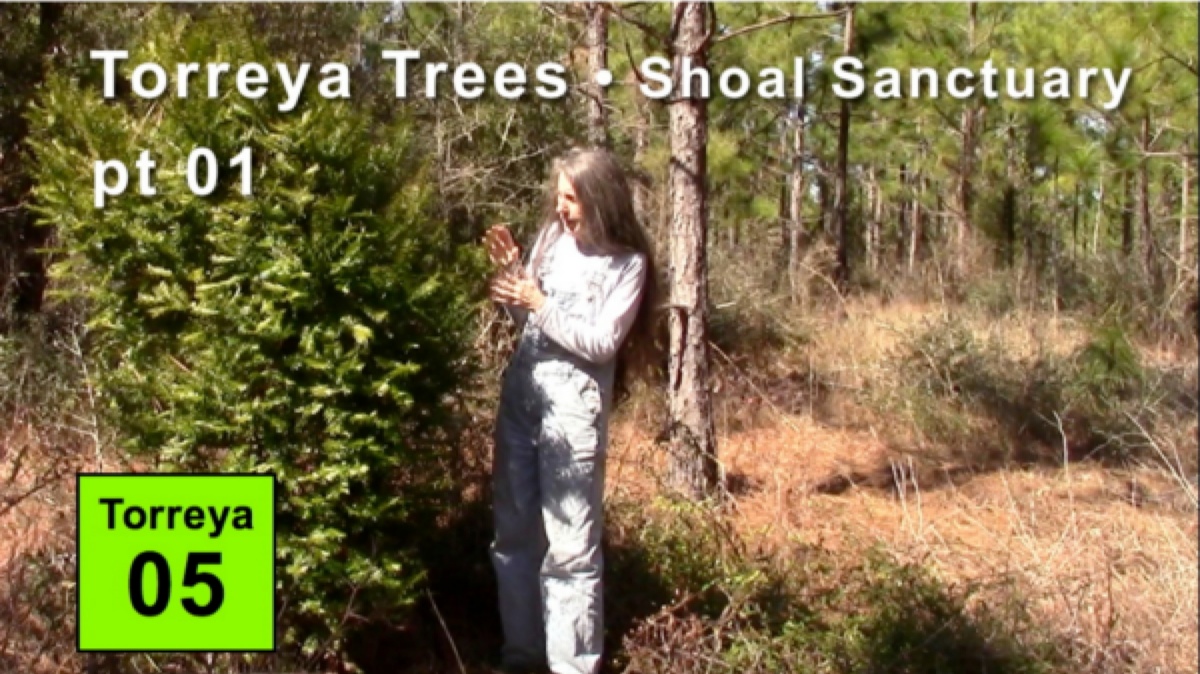 |
|
Chris Larson of Shoal Sanctuary, Florida, shows the four Torreya trees thriving since their planting in 2001.
Of note: (1) only one tree has grown reproductive structures (male); (2) one survived a severe burn amid the longleaf pines; (3) all are thriving in nearly full sunlight on sandy soils; (4) agricultural lime is applied only rarely (when the evergreen leaves show yellowing); and (5) all four specimens are watered twice weekly.
|
EPISODE 04: Florida Torreya in Ohio's Secrest Arboretum: 2014 report
11 minutes - published October 7, 2014
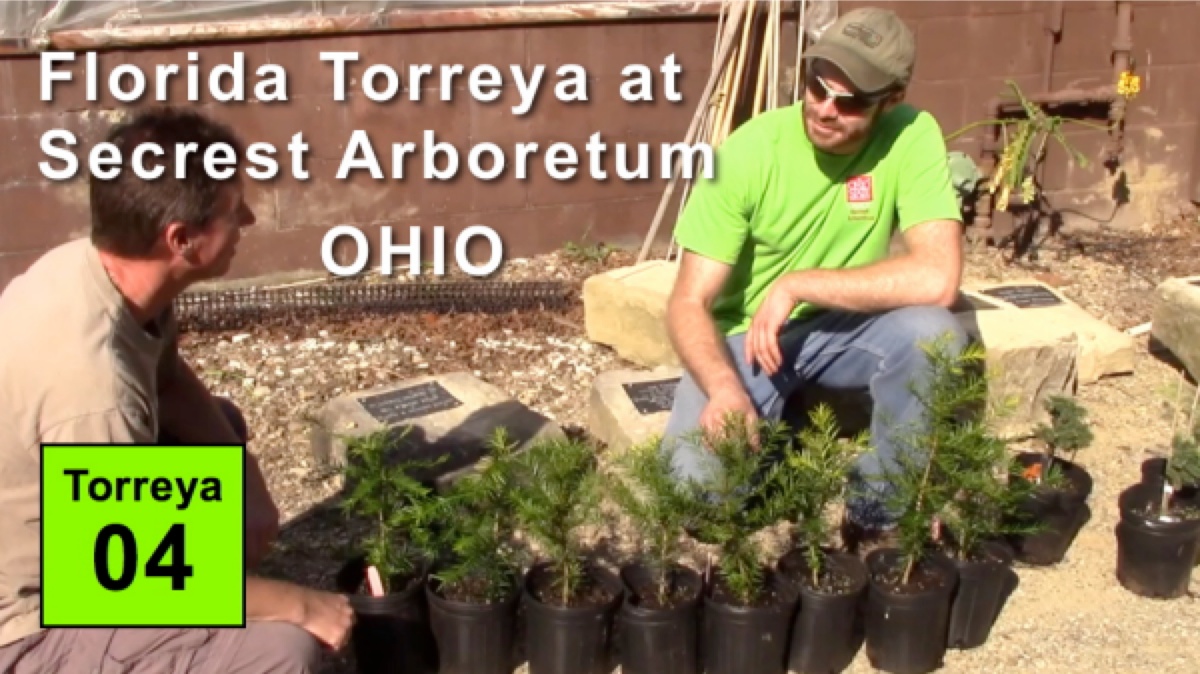 |
|
Fred Bess and Connie Barlow interview Secrest Arboretum's Paul Snyder re the successful germination of seeds from the 2011 seed harvest of Torreya Guardians.
They discuss germination time, growth characteristics, preventing tree injury by overpopulated deer, and ultimately where in the arboretum the young trees will be planted.
|
03: Torreya taxifolia assisted migration to Cleveland Ohio - 2014 report
9 minutes - published April 11, 2014
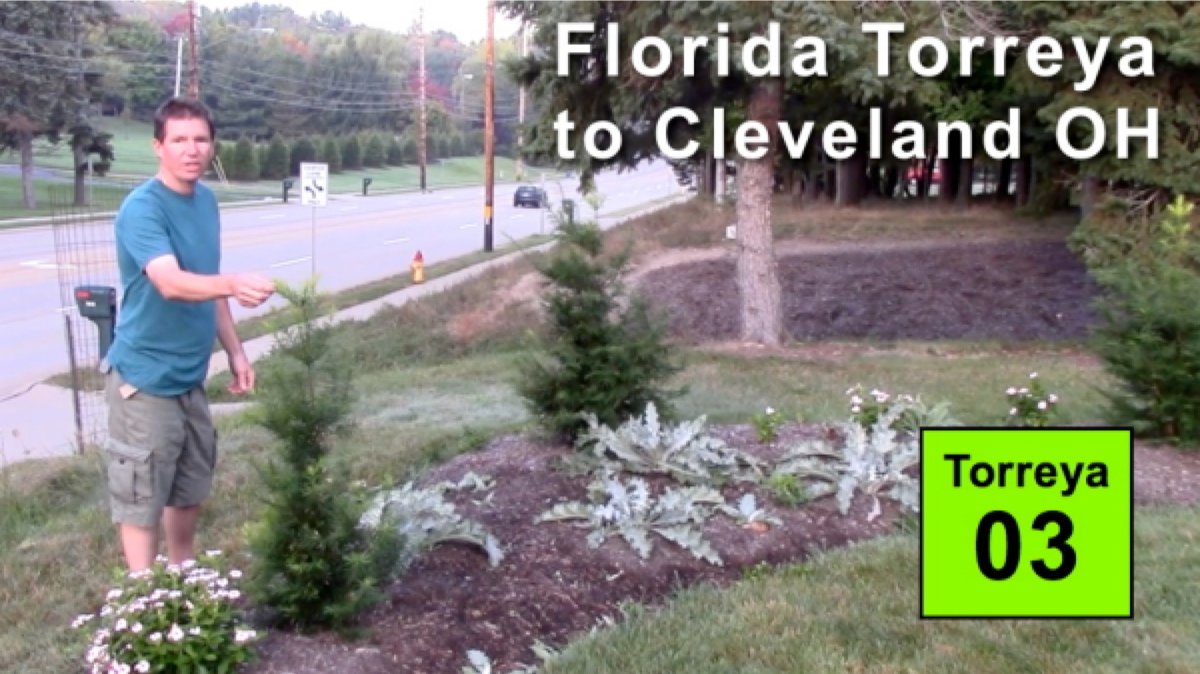 |
|
Fred Bess reports on 5 young Torreya trees planted at his home in Parma, OHIO (a suburb of Cleveland). Significant findings:
(1) All 5 survived the -17F degrees polar vortex of January 2014. (2) Although deer do not eat Torreya, bucks scrape antlers on the stiff branches of juvenile plants, causing injury. Thus any Torreya planted in areas overpopulated with deer must protect young trees during autumn.
|
• SCROLL UP TO VIDEO 27, filmed October 2018, to see how these trees have matured — and seeded!
EPISODE 02: Climate Endangered Florida Tree Moved to Michigan
29 minutes - published September 26, 2014
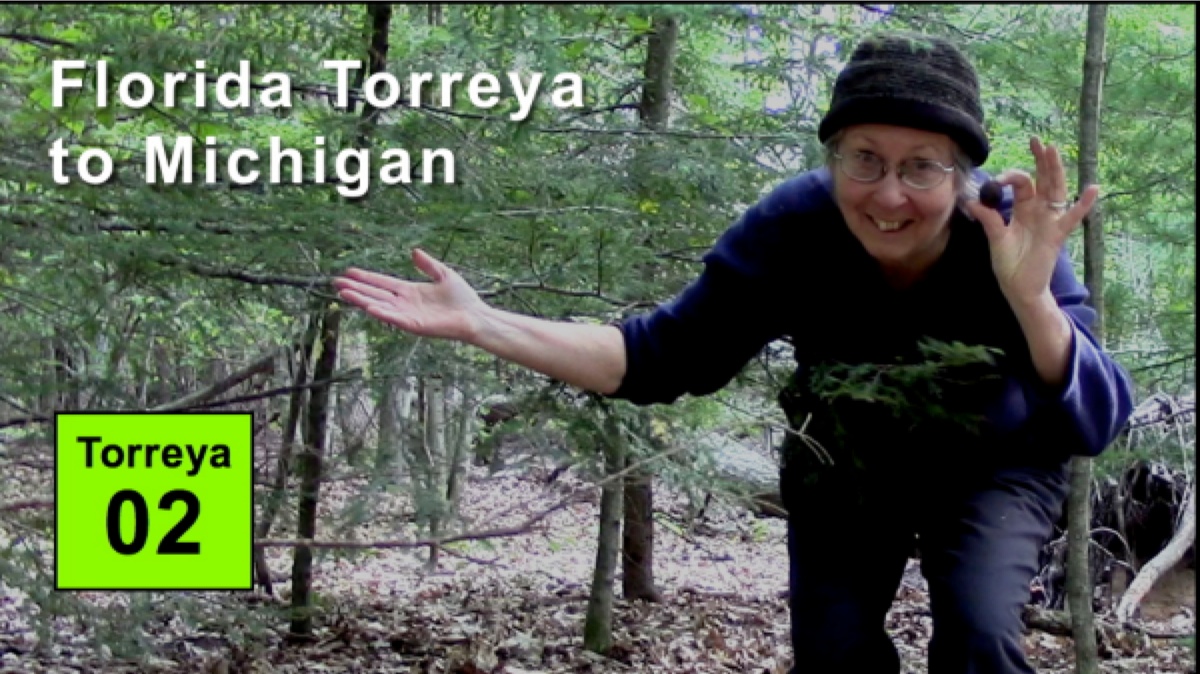 |
|
Consensus is growing that, of all trees native to the USA, "Florida" Torreya (an evergreen conifer related to yew trees) is the most in need of immediate assistance in moving north, as it was "left behind" in a peak glacial refugium since the end of the last ice advance.
Given adequate seed stock, Connie Barlow decided it was crucial to discover just how far north in today's climate Torreya can grow. Here she documents an experiment.
|
MICHIGAN UPDATE 2018: No seedlings visible in 4 years confirms that shallow seed-planting is food court for rodents. Scroll up to Episode 25 to see another Michigan volunteer who showcases her seedlings — planted 4 to 6 inches deep.
EPISODE 01: Helping Plants Move North in Anthropocene Climate: 2013 Report
75 minutes - published November 7, 2013
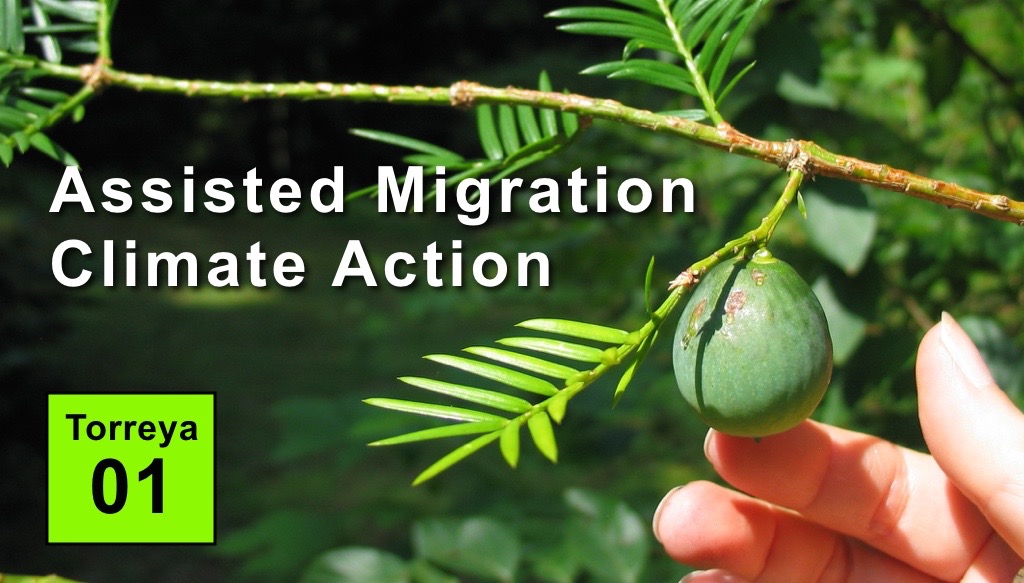 |
|
Climate is warming too fast for large-seeded plant species to migrate north via the animal partners (e.g., squirrels) that have dependably dispersed seeds for millions of years.
In 2008, a group of citizen-naturalists (Torreya Guardians) legally planted 31 seedlings of the endangered Florida conifer Torreya taxifolia within private forests in the mountains of North Carolina. Connie Barlow reports their learnings during the first five years.
|
_______
VIDEO: Foresters Outpace Conservation Biologists in Climate Adaptation
1 hour - filmed September 11, 2015
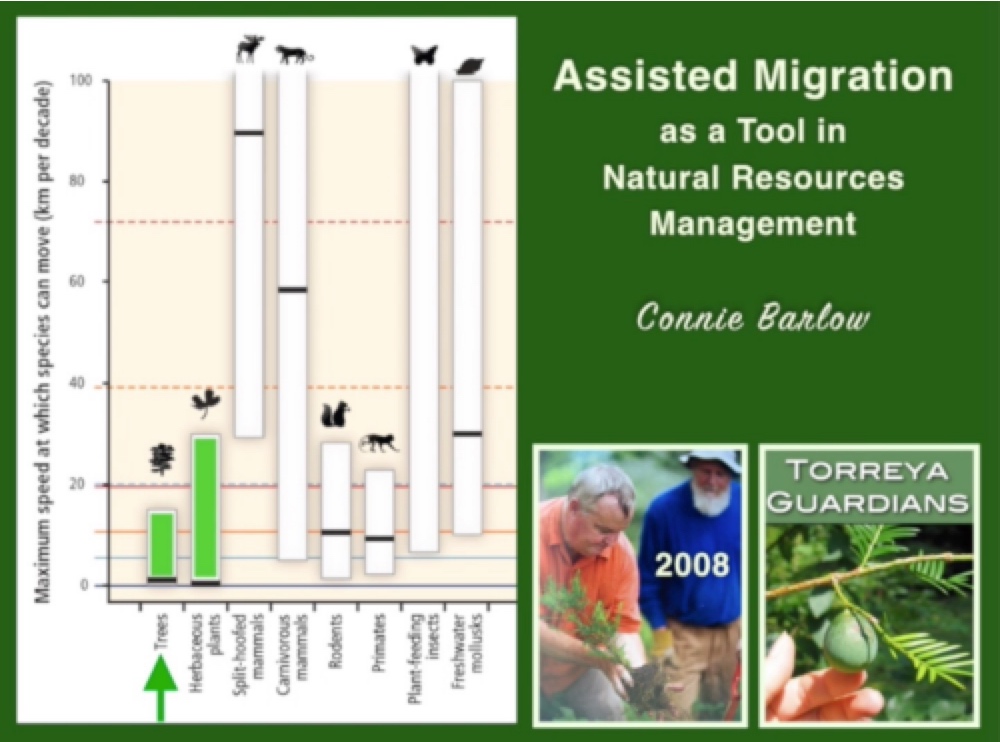 |
|
The "assisted migration" ongoing project of Torreya Guardians is regularly cited in academic literature on climate adaptation controversies in biodversity and ecosystems protection. Here, Connie Barlow presents the first (highly illustrated) talk to professionals.
Speaking to faculty and students at Michigan Technological University's School of Forest Resources and Environmental Science, Barlow presents the history of the "assisted migration" controversy — highlighting the reasons why foresters have already taken actions where conservation biologists fear to tread.
|
Note: This video is episode 08 in an ongoing video series by Barlow on forestry and climate adaptation. See an annotated list of titles and links to all such videos here: "CLIMATE, TREES, and LEGACY".
RETURN TO HOME PAGE